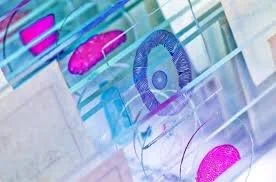Fresh Frozen Tissue and Clinical Surgical Specimens
Since many pathology departments at hospitals have procedures for the reception and handling of fresh specimens, a biobanking manual based on the already established structure to enable the collection of unfixed tissue samples can be produced. This allows the collection of all types of surgical lesions. The procedures can be used for all specimens such as a tumor, rejected transplanted organs, atherosclerosis, inflammatory bowel disease, etcetera. Most surgical specimens are transported to the pathology department for potential biobanking. One of the most important concerns for all clinical biobanks is diagnostic security. The pathologist involved has the responsibility to report the diagnosis based on the fresh specimen.
One main limiting factor in frozen tissue biobanking is the well-understood hesitance of pathologists to remove abnormal tissue for biobanking purposes as it may jeopardize the appropriate diagnosis and treatment for the patient. A potential solution to this issue is to perform cryosection and histological examination of the specimen once it enters the biobank. Another important concern for biobanks is the possibility of tissue degradation during transport from the surgical theater to a facility. However, most tissues are usually stable for hours since it is transported on ice. It is also important for each research project to define their tissue quality criteria to ensure that the samples meet their standards.
Tissue Sample Collection and Biobanking
These are some of the methods that can be applied through different stages of biospecimen collection:
1) Surgical Theater
Fresh specimen should only be handled in a designated area. Between each case, the area should be decontaminated by removing material from previous cases. Specimens should only be handled using gloves and instruments. Responsibilities of various staff members should be documented.
The pathology chart should note the time when the specimen has been removed from the patient.
Specimens should be placed in a clean surgical cloth, plastic bag, jars, or a test tube. It should also be immersed in a cold saline solution.
The specimen should be transported at ±0⁰C (partly filled with wet ice). It is important to note that the specimen should not be in direct contact with the cooling agent (water or ice) during transport.
Inform the technician at the pathology department for reception of the specimen. The communication routine between the theater and pathology department should be safe and clear. Ensure that the specimen is delivered.
2) Pathology Department
Upon arrival at the pathology department, the time of arrival should be noted on the chart. It should be registered in the clinical laboratory management system and labeled with a case number.
The pathologist on call should be notified regarding the arrival of the specimen. If a delay is inevitable, the specimen should be placed in the refrigerator.
Once ready, the specimen is removed and placed on a clean sheet of filter paper. The macroscopic features of the specimen (weight, measurements, description) should be noted in the chart.
Pieces of the specimen that represents the lesion and normal tissue should be cut out and placed into a cryomold for cryogel coverage. Storage of samples in cryogel prevents the lyophilization of the specimens. It also helps o keep the DNA and RNA intact. The mold is then snap-freeze in dry ice or isopentane. The time of freezing, biobank numbers, pathologist signature, and technician signatures are noted. These tissue blocks are then transferred to a low-temperature freezer.
It should be noted that the thawing of a sample during the lifespan of a fresh frozen biobank sample is one of the most important risk factors for the degradation of tissue. A cryostat to avoid thawing during delivery can be used to slice sections for protein, DNA, or RNA extraction. The tissue lock can also be cracked on a cutting board that has been cooled on dry ice if a larger portion of the sample is needed.
3) Biobank
The biobank technician then makes cryosections of the biobank samples.
An adhesive tape helps support the section during the cutting and transfer process to prevent folds and tears. Once the section is crossed-linked onto a slide, the tape can be peeled off.
Sections are fixed, stained, mounted, and lastly labeled with a case number. These slides are then delivered to the pathologist who is responsible for reporting the diagnosis. The biobank technician registers the case along with relevant information such as name, identification number, age, gender diagnosis, and more.
Biobanking protocols concerning biospecimens should be integrated with both local and national established clinical or diagnostic procedures. The protocols should also be authorized by those relevant.
Conclusion
It is critical for research teams involved in molecular diagnostics and translational cancer to have access to quality fresh frozen tissue. This article helps to describe a workflow for the collection of frozen biospecimens after derived from patients after surgery. These routines are used at Uppsala University Hospital since 2001 where the team integrates cryosection and histopathologic examination of the samples in the manual this is to help procure small lesions while avoiding a diagnostic hazard due to the removal of abnormal tissue from the surgical specimen.
References
Botling J, Micke P. Biobanking of fresh frozen tissue from clinical surgical specimens: transport logistics, sample selection, and histologic characterization. Joakim Dillner (ed.). Methods in Biobanking, Methods in Molecular Biology, vol. 675: page 299-306.






